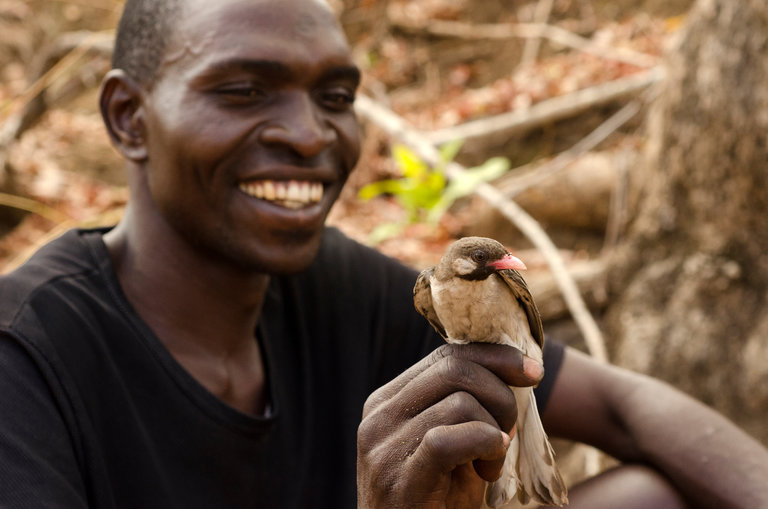PBS: Escaping Eritrea … [Read More...] about ካብ ውሽጢ ቤት ማእሰርታት ኤርትራ
In Africa, Birds and Humans Form a Unique Honey Hunting Party
Their word is their bond, and they do what they say — even if the “word” on one side is a loud trill and grunt, and, on the other, the excited twitterings of a bird.

Researchers have long known that among certain traditional cultures of Africa, people forage for wild honey with the help of honeyguides — woodpecker-like birds that show tribesmen where the best beehives are hidden, high up in trees. In return for revealing the location of natural honey pots, the birds are rewarded with the leftover beeswax, which they eagerly devour.
For their part, the Yao seek to recruit and retain honeyguides with a distinctive vocalization, a firmly trilled “brrr” followed by a grunted “hmm.” In a series of careful experiments, the researchers then showed that honeyguides take the meaning of the familiar ahoy seriously.
The birds were twice as likely to offer sustained help to Yao foragers who walked along while playing recordings of the proper brrr-hmm signal than they were to participants with recordings of normal Yao words or the sounds of other animals.

African bees are particularly aggressive and will swarm any intruder that so much as jiggles an adjoining branch. Even our closest relatives are loath to disturb a beehive.
Much harder for the Yao is finding the hives. That’s where the honeyguides come in. Not only can they easily flit from tree to towering tree; they have unusually large olfactory bulbs, and they are good at smelling wax, which makes up a good part of their diet.
“It’s decidedly odd to eat wax, but if you’ve got the metabolism to break it down, it’s a good source of calories,” Dr. Spottiswoode said. The birds can nibble on waxy plants, waxy insects, the waxy detritus in an abandoned bee nest. Or they can summon human honey hunters to crack open a felled and toasted hive, remove the honey and leave the fresh waxy infrastructure to them.
Researchers have identified a couple of other examples of human-wild animal cooperation: fishermen in Brazil who work with bottlenose dolphins to maximize the number of mullets swept into nets or snatched up by dolphin mouths, and orcas that helped whalers finish off harpooned baleen giants by pulling down the cables and drowning the whales, all for the reward from the humans of a massive whale tongue.
The bird might even have played a role in the emergence of fully modern humans and their energetically demanding brains. Honey is a vital resource for many subsistence cultures, Dr. Wrangham said, “sometimes supplying 80 percent of calories in a month.”
